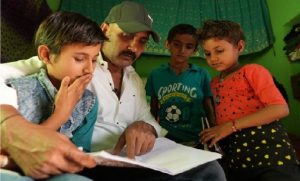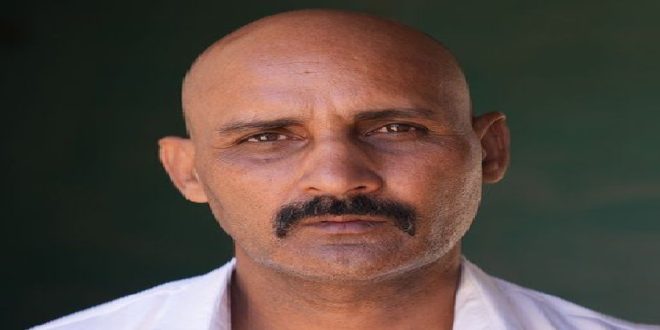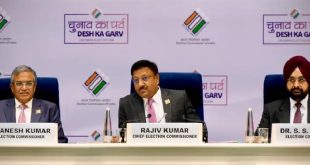17-04-2023
Bureau Report + BBC
NEW DELHI/ JALABSAR: Twenty five years ago, a teenage boy in India was wrongly sentenced to death as an adult for murder. In March, the Supreme Court freed him after confirming that he was a juvenile at the time of the incident.
The BBC’s Soutik Biswas travelled to Jalabsar village in the state of Rajasthan to meet the man, now 41.
 It has been a little over a week since Niranaram Chetanram Chaudhary was freed from the death row in a prison in India’s western city of Nagpur.
It has been a little over a week since Niranaram Chetanram Chaudhary was freed from the death row in a prison in India’s western city of Nagpur.
He spent much of his 28 years, six months and 23 days in custody 10,431 days in total by pacing back and forth in his 12ft by 10ft maximum security cell, reading books, taking exams and trying to prove that he had been found guilty and sentenced before turning 18.
Niranaram was on death row for the 1994 murder of seven people, five women and two children in the city of Pune. He had been arrested along with two other men – from his village in Rajasthan. In 1998, he was sentenced to death on the assumption that he was 20.
In March, India’s Supreme Court finally ended Niranaram’s three-decade long ordeal, involving three courts, countless hearings, changing laws, appeals, a mercy petition, age determination tests and a search for his birth date papers.
The judges concluded that Niranaram was 12 years and six months old – or a juvenile at the time of the offence. (Under Indian laws, a juvenile cannot be sentenced to death, and the maximum punishment for all crimes is three years.)
 How had such an egregious miscarriage of justice happened, condemning a teenager to the death row?
How had such an egregious miscarriage of justice happened, condemning a teenager to the death row?
For reasons that are not entirely clear, the police had recorded an incorrect age – and name – when Niranaram was arrested.
His name was wrongly noted as Narayan in a memo prepared by the police at the time of arrest. Nobody quite knows when an erroneous age was first recorded. “His arrest records are very old. The original trial papers didn’t even reach the Supreme Court,” said Shreya Rastogi of Project 39A, a criminal justice program at Delhi’s National Law University. (Niranaram’s release followed a nine-year-long effort by the program.)
Surprisingly, the mistake in his birth date and the claim of juvenility was not raised by the courts, prosecutors and defence lawyers until very late in the case 2018. Absence of birth certificates means many Indians, especially in rural areas, are unaware of their birthdates Niranaram was one of them.
What eventually saved him was an entry in an old register in his village school showing his date of birth as 1 February 1982. There was also a school transfer certificate with dates of his joining and leaving the school and a certificate from the village council head attesting that Narayan and Niranaram were the same person.
“The entire system failed. The prosecutors, defence lawyers, the courts, the investigators. We simply failed to verify how old he was at the time of the incident,” said Rastogi.
 Pressmediaofindia
Pressmediaofindia




